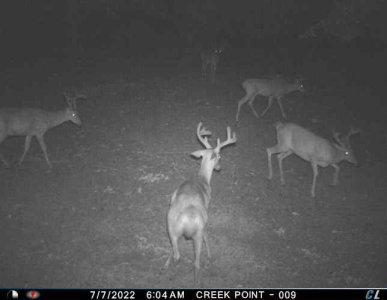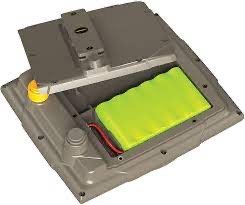MadMadHoosier
5 year old buck +
Living over 600 miles from our farm has it's challenges. One of them was how often cameras went dead between our occasional visits.
This is not meant to be a commercial for them, but CuddeLink has made life much easier. I have solar panels on a few places that work, and look forward to their new solar panels that are supposed to work in the woods. For areas that solar has not previously worked, it's (mostly) 4-D cells in the camera, and a 6-D booster on each location. The home cameras, and a few high volume cameras, have the 12-D booster.
The results have been astounding! My longest solar is at 1167 days without being touched!!! Actually one solar set up would have that beat, but a squirrel chewed through the power cord between the camera and panel, and it reset the days (707 now) when repaired. The other solars are at 830 & 535 days.
My best battery set up is at 411 days. This is a low picture volume location - but still. Most of the set ups get over 250 days between battery swaps. Even the high volume areas seldom get less than 100 days.
While I wish the transmitted resolution was higher, getting up to 24 cameras per cellular account is an acceptable compromise. And the SD card can always be pulled for a full resolution image.
Prior to CuddeLink I had about a dozen cameras and 8-10 corn feeders. Of course the feeders caused a high volume of pictures and the camera batteries were lucky to last a month. Now I only have 3 protien feeders, in the center of the farm, and where solar will work. The money spent on prior feeder maintenance and corn is now spent on more cameras. It seems to give a better survey of the wildlife around the farm. But I'm still learning as I go, and trying new things when they make sense, so we will see where it goes.
Edited to add: And of course, being able to view images on a daily basis is another game changer!
This is not meant to be a commercial for them, but CuddeLink has made life much easier. I have solar panels on a few places that work, and look forward to their new solar panels that are supposed to work in the woods. For areas that solar has not previously worked, it's (mostly) 4-D cells in the camera, and a 6-D booster on each location. The home cameras, and a few high volume cameras, have the 12-D booster.
The results have been astounding! My longest solar is at 1167 days without being touched!!! Actually one solar set up would have that beat, but a squirrel chewed through the power cord between the camera and panel, and it reset the days (707 now) when repaired. The other solars are at 830 & 535 days.
My best battery set up is at 411 days. This is a low picture volume location - but still. Most of the set ups get over 250 days between battery swaps. Even the high volume areas seldom get less than 100 days.
While I wish the transmitted resolution was higher, getting up to 24 cameras per cellular account is an acceptable compromise. And the SD card can always be pulled for a full resolution image.
Prior to CuddeLink I had about a dozen cameras and 8-10 corn feeders. Of course the feeders caused a high volume of pictures and the camera batteries were lucky to last a month. Now I only have 3 protien feeders, in the center of the farm, and where solar will work. The money spent on prior feeder maintenance and corn is now spent on more cameras. It seems to give a better survey of the wildlife around the farm. But I'm still learning as I go, and trying new things when they make sense, so we will see where it goes.
Edited to add: And of course, being able to view images on a daily basis is another game changer!


